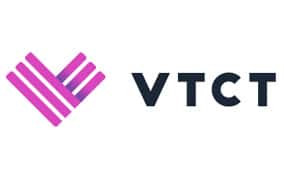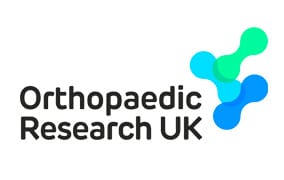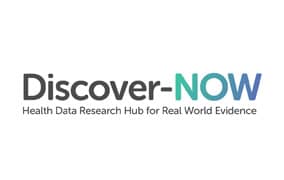
Is your website falling short?
Conversions are disappointing, engagement is lack lustre, users are frustrated and order values aren’t meeting expectations either.
So what’s missing?
You might be overlooking the untapped potential of your site’s visitors. By leveraging behavioural science and data, you can uncover invaluable insights to eliminate obstacles and enhance your user’s journey to conversion.






Our tried and tested conversion-boosting framework...
Has been converted into a guided programme for teams like yours
Has been packaged up in a variety of audits for maximum value
Take the free SmartSite health check
8 minute readWant to know how your site measures up and what you’re missing? Take our SmartSite health check.
Take the health check
Want to know how your site measures up? Take our FREE SmartSite health check.
Take the SmartSite health checkSit back, relax. Let your SmartSite do the heavy lifting
It’s all about transforming your website so it achieves maximum potential whilst giving you the peace of mind that it won’t be the bottleneck for your wider marketing efforts.
Our vision of a more inclusive, accessible and sustainable web, is in fact neatly aligned with what makes users click. So together, we can drive change whilst also driving business growth.
With a range of tools, programmes and services, we’ve carefully considered everything you might need to perfect your website, turning it into a human-centred, conversion machine.
Achieve SmartSite status
Who wouldn’t want a website that engages and converts better than EVER…

The 5 defining principles of a high-performance website
Stimulate
Create meaningful, engaging connections. Draw users in by aligning your messaging with what truly resonates.
Move
Motivate users to take action with clear, logical pathways. Every step should feel natural and intuitive.
Attract
Make a striking first impression with a design that captivates and instils confidence.
Reassure
Build trust and loyalty by offering reassurance at every stage of the journey. Users need to feel secure and supported.
Timely
Streamline the users’ experience by removing friction and adding time-based nudges to help guide decisions.
The Human is at the centre of these principles. Putting them first opens up a goldmine of opportunities
Show me the scienceDriven by Results
A successful website does more than attract visitors – it engages them and drives meaningful actions, such as sales, sign-ups, donations, or inquiries. We understand the importance of achieving results, which is why we focus on optimising websites to exceed expectations.
By combining behavioural insights with proven strategies, we create seamless, engaging experiences that boost conversions. This not only maximises ROI from your campaigns but also builds customer loyalty and drives sustainable growth. When your website performs better, your business thrives.
Happy customers are one thing, but hard and fast results are equally important for us to see. Seeing your growth and your teams unite towards a common goal is what it’s all about for us.
"OrangeGrove brought an intellectually rigorous, dispassionate approach to our website review, helping us to see beyond existing thought-biases to understand more clearly our audiences’ needs. They were professional, challenging and great fun to work with"
Behavioural design & Neuromarketing insights
Why We Can’t Stop Homescrolling: The Neuroscience and What We Can Learn From It
Personalisation: The Key to Website Growth That Speaks to Your Audience
You probably have some questions for us
1. What is a SmartSite?
Imagine an organisation that relies on their website for leads, enquiries, sales. Or one that is offered as a valuable resource for their prospects, customers and clients.
Now imagine that you, as the marketing manager, CMO or director can sit back and completely trust the website to do this job, and do it well.
Imagine that not only does the website do this job well, but it does it so well these people keep coming back, time and time again. Brand loyalty is at an all time high, as is customer satisfaction. The website has had a huge hand in this too.
Marketing campaigns are converting brilliantly, sales teams are chuffed about the standard of leads coming through, bosses are ecstatic about the ROIs achieved and growth obtained.
This is a SmartSite. Read more about SmartSite here »
2. What are the key elements of a high-converting website?
A high-converting has 5 key elements to it:
- They have a Spark – This comes from creating a meaningful connection with the user and is achieved through resonating & engaging them.
- They motivate the user to take action. This is achieved through nudges, strong CTAs and logical user journeys.
- They instantly appeal to visitors and create a halo effect. It is through informed and intelligent design this is achieved.
- They provide reassurance, building the user’s trust and loyalty using effective signals logically positioned.
- They tracks and analyses user behaviour fostering a solid feedback loop for continuous learning improvement.
We call a high-converting website a SmartSite. Explore the SmartSite details here »
3. What is UX?
UX is short for user experience.
User Experience (UX) refers to the overall experience and satisfaction a user has when interacting with a product, system, or service. In the context of websites and digital products, UX encompasses a wide range of factors, including:
- Usability: How easy and intuitive it is for users to navigate and use the website or product. This involves clear navigation, straightforward interfaces, and efficient interactions.
- Accessibility: Ensuring that the website is usable by people with various disabilities. This includes providing alternative text for images, keyboard navigation, and screen reader compatibility.
- Performance: The speed and responsiveness of the website. Fast loading times and smooth interactions contribute to a positive user experience.
- Aesthetics: The visual appeal of the website. A clean, attractive design can make the user experience more enjoyable and engaging.
- Content Quality: The relevance, clarity, and usefulness of the information provided. High-quality content that meets user needs can significantly enhance the user experience.
- User Satisfaction: The overall feeling of satisfaction or dissatisfaction that users experience when interacting with the website. This includes emotional responses and perceived value.
- Consistency: Providing a uniform experience across different pages and sections of the website, as well as across different devices and platforms. Consistency helps users feel familiar and comfortable with the site.
- Functionality: Ensuring that all features and elements of the website work as intended without errors or issues. Reliable functionality is crucial for maintaining user trust.
- Feedback and Support: Providing users with appropriate feedback during interactions (such as confirmations or error messages) and offering accessible support options when needed.
UX design involves researching and understanding user needs, behaviours, and motivations through methods like user testing, surveys, and analytics. The goal is to create products that provide meaningful and relevant experiences to users, leading to higher satisfaction, loyalty, and success for the product or service.
4. What is the role of behavioural science in UX?
Behavioural science is the key element involved in UX optimisation.
UX design is concerned with researching and understanding user needs, behaviours, and motivations. Behavioural science allows us to dig deeper, helping us understand the conscious and subconscious motivators which will open up more opportunties and ultimately inform more accurate design decisions.
Read more about behavioural science here »
5. What is the role of accessibility, sustainability and usability in websites?
The roles of accessibility, sustainability, and usability in websites are crucial for creating effective, inclusive, and enduring digital experiences.
Accessibility ensures that websites are usable by people of all abilities and disabilities, including those with visual, auditory, motor, and cognitive impairments.
Sustainability in web design focuses on creating websites that are environmentally friendly, economically viable, and socially responsible over the long term.
Usability ensures that websites are easy to use, efficient, and satisfying for users, thereby enhancing the overall user experience.
Sign up to an upcoming webinar to find out more »
6. What is human-centred design?
Human-centred design is all about developing a product or interface that is empathetic of the user’s needs. It puts the user first when designing and building a website. To achieve this the problems your users are facing must be fully understood, as well as knowing what they’re driven by / what motivates them most in life. Only then can that information be translated digitally into an user-optimised experience.
The main incentive for an organisation to adopt a human-centred approach is to improve their customers’ experience, resulting in more sales, enquiries, leads and engagement.
Sign up to an upcoming webinar to find out more »












